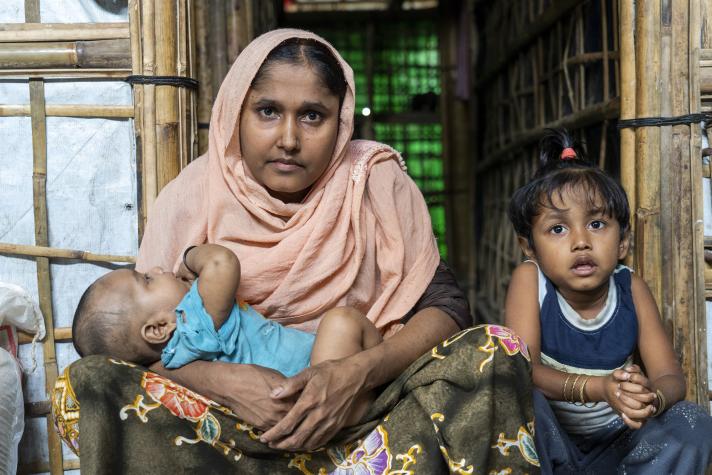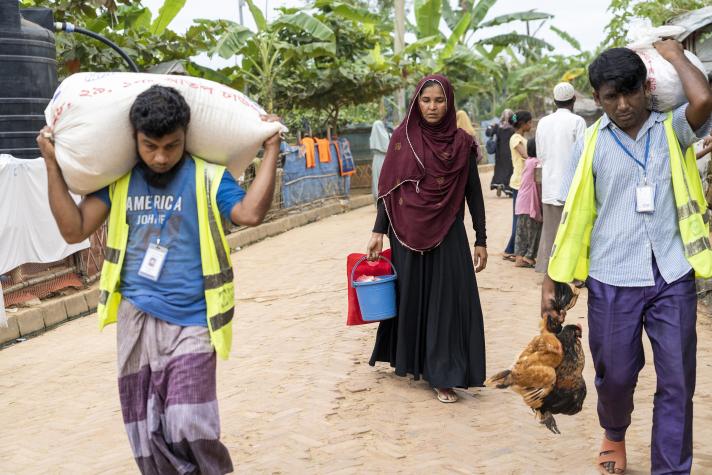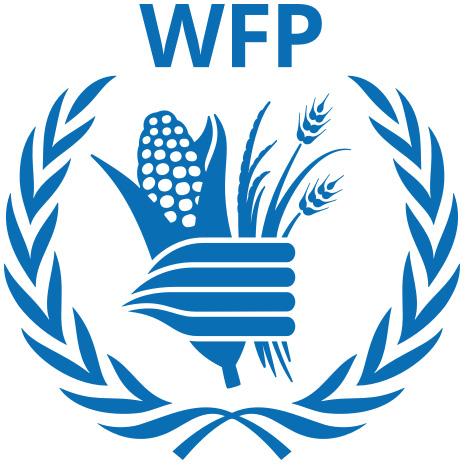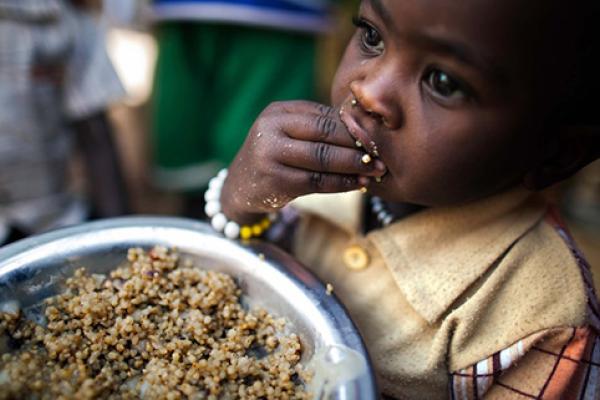Last year, a substantial funding shortfall forced the World Food Programme (WFP) to reduce by 30% the food rations in camps in Bangladesh, where almost 1 million Rohingya refugees live, after they fled violence and persecution in Myanmar live.
Since then, the food and nutrition situation has deteriorated sharply. By November, 90% of the camp population struggled to access an adequate diet. Over 15% of children were suffering from malnutrition – the highest rate ever recorded in the camps. With movement restrictions still in place and most refugees lacking access to livelihood opportunities, the Rohingya remain heavily reliant on humanitarian aid, as the crisis approaches its 8 year.
Thanks to the European Union and other donors, WFP was able to partially reverse the ration cuts from last year. The food voucher value increased back up to US$10 per person per month, and fortified rice was introduced to address the rising malnutrition. But Rohingya refugees continue to struggle to meet their basic needs
The ration still falls short of meeting their minimum energy and nutritional requirements. Violence, insecurity, and human trafficking are increasing concerns in the refugee camps. Amidst fires, cyclones, and floods, 2023 also saw the highest number of Rohingya embarking on dangerous boat journeys. Nearly 4,500 attempted to across the Andaman Sea and Bay of Bengal, in the hope of finding a better life. At least 569 of them lost their lives.
In the following personal accounts, Rohingya refugees from the Cox’s Bazar refugee camps and Bhasan Char, an island where nearly 35,000 Rohingya refugees have been relocated to, highlight the precarious situation they find themselves in.













